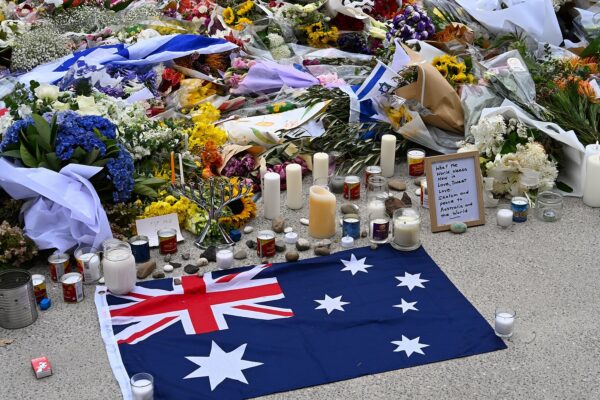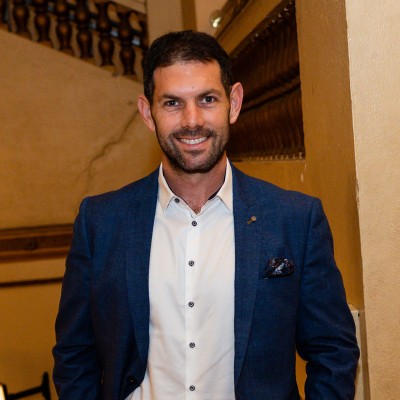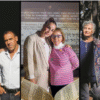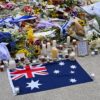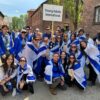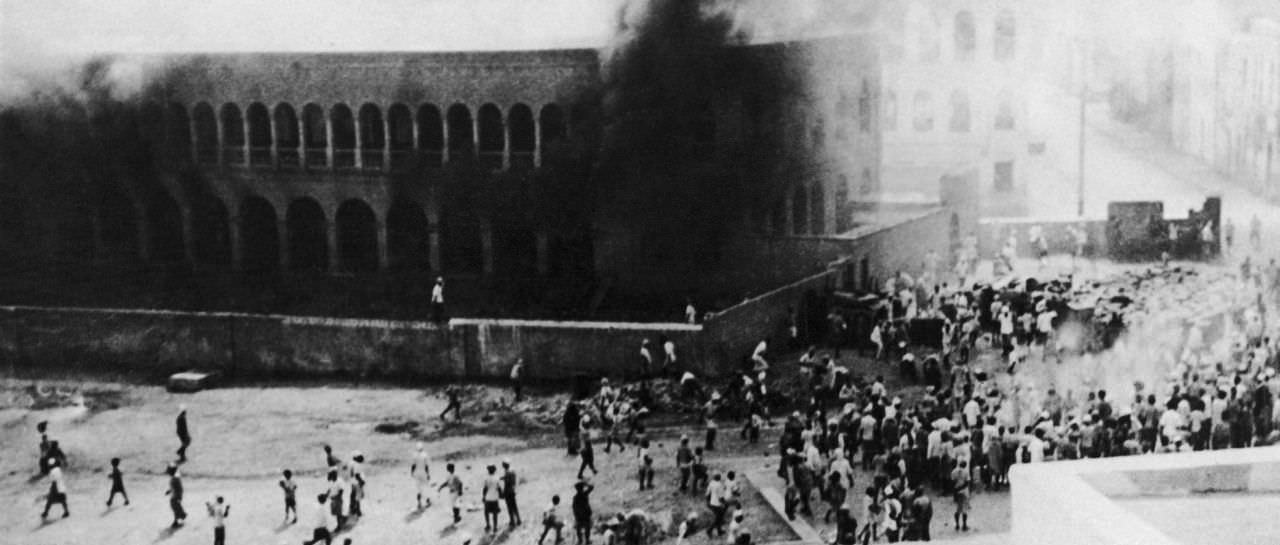
Arabs set alight a Jewish school for boys in Aden, Yemen during a demonstration against the UN partition of Palestine, on December 19, 1947. AP
Shimon Sasson, 84, of Tel Aviv, was 15 when the riots broke out in the port city of Aden. It happened just after November 29, 1947, the date on which the United Nations approved the partition plan for Palestine, paving the way for the founding of the State of Israel.
“I heard the report on the UN vote on the radio with my family at home in Aden,” Sasson told Haaretz this week. “Afterward we went downstairs and told everyone who’d gathered outside the house who had voted for, who against, and who had abstained. There was cheering.”
But the joy was premature and replaced very shortly with alarm. “What happened was totally unexpected and hit us out of nowhere,” wrote Ovadia Tuvia, a Jewish Agency representative, describing the pogrom against local Jews to his superiors in Eretz Israel.
On November 30, Israel observes the Day to Mark the Departure and Expulsion of Jews From the Arab Countries and Iran, an official memorial day established by the Knesset two years ago.
In Aden, which at the time was a British colony and today is part of Yemen, there was an ancient community of Jews numbering around 5,000 people, who lived alongside the local Arab population. The rioting began on December 2, 1947 and lasted three days. “On the night of December 2 the Arabs started to burn Jews’ cars in the streets,” Sasson recalled. “The next day they invaded our neighborhood. The streets were totally empty. We threw bottles at them.”
A day later Arabs started to torch Jewish stores, businesses, and homes. “A few families fled their homes and ran to our house, which was in the middle of the neighborhood. I opened the door and took in five families,” whose names he still remembers.
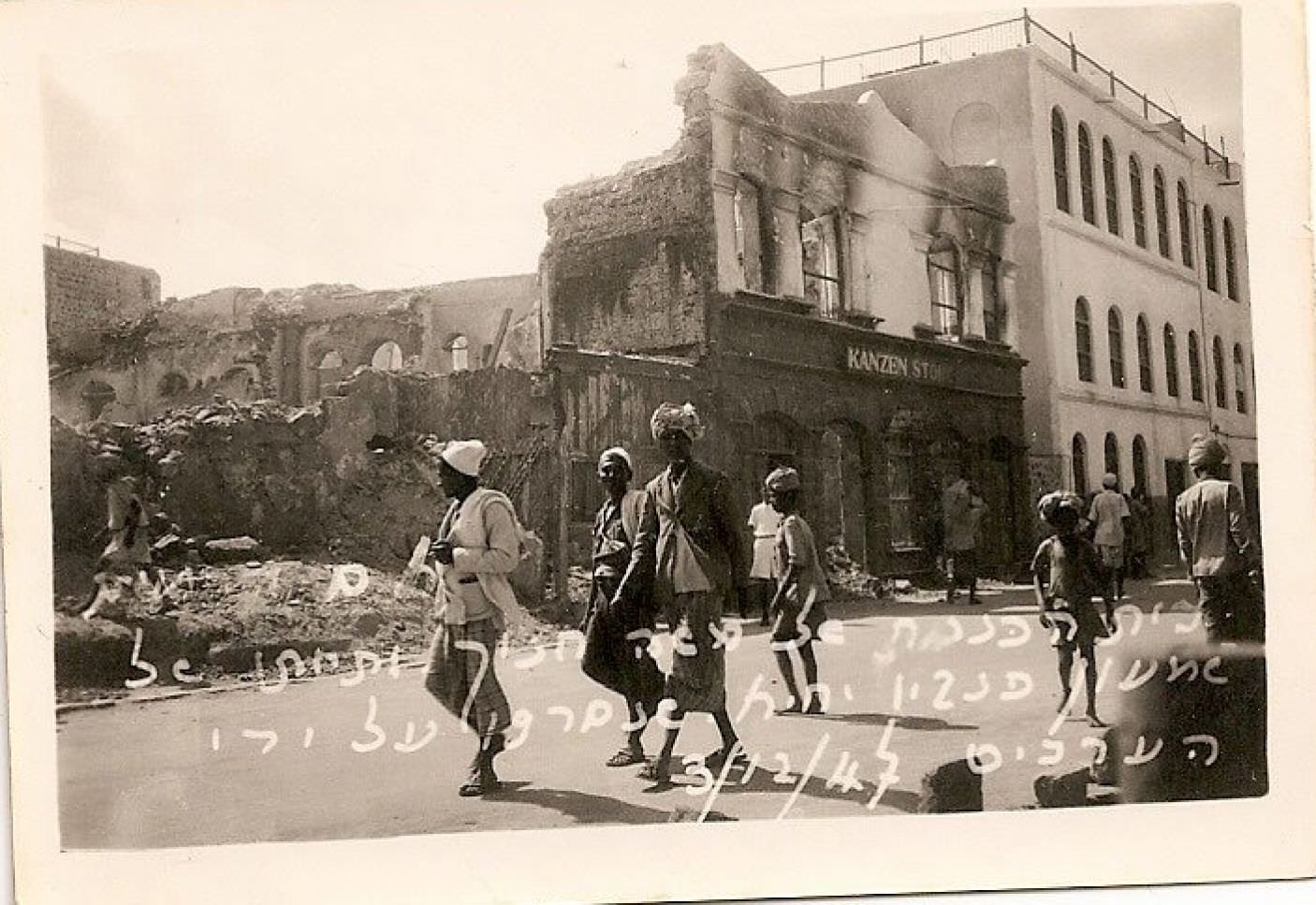
A building burnt during the riots in the port city of Aden, Yemen, in 1947. Danny Goldschmidt, Aden Jewish Heritage Museum
The Jewish leaders asked the British for help. In response, they sent a unit of Bedouin policemen under British command. “That’s when the disaster started,” Tuvia wrote. “The hooligans started to loot Jewish stores. The policemen stood aside and smiled. Another minute and you could see them assisting in the looting and pillaging.”
The British declared a curfew. “I didn’t know what a curfew was, so I went up on the roof to see what was happening in the street. I saw a soldier there with a rifle. I ducked and he shot at me.” The bullet didn’t hit him, but hit a 15-year-old girl who had found refuge in his house. “The bullet hit her in the head. She died on the spot,” he said. “There was great turmoil in the house.” They had to wait three days until they could put the body out for burial in a collective grave.
“Any Jew who called out for help or who went up to the roof to put out the fires in his house or to escape it was greeted with a hail of bullets,” wrote Tuvia, who had been born in Aden in 1920, immigrated to Palestine and returned in 1945 to organize aliyah to the soon-to-emerge state. “The mad cries in the Jewish neighborhood tore the heavens. All the Jewish homes were pockmarked with bullet holes. One house was burned. Dozens of bodies fell, one after the other.”
Gavriel David, who was an infant at the time, lost his grandfather, Yihye, in the riots. His recollections are based on the stories he heard from relatives. “Eighty-seven Jews were shot, slaughtered and burned to death. My grandfather was shot in the head by a sniper,” he said. “He didn’t die on the spot. He bled all night at home.” Yihye was evacuated to a hospital the next day, but died of his wound.
After three days, when the British army finally came into the Jewish quarter, the rioting stopped. “On Friday morning they went out to collect the dead,” Tuvia wrote. “A truck went from street to street to collect them. Every home brought down its dead to the middle of the street and Yemenite refugees buried them in a collective grave, with no funeral and no ceremony. The streets were filled with crying and wailing.”
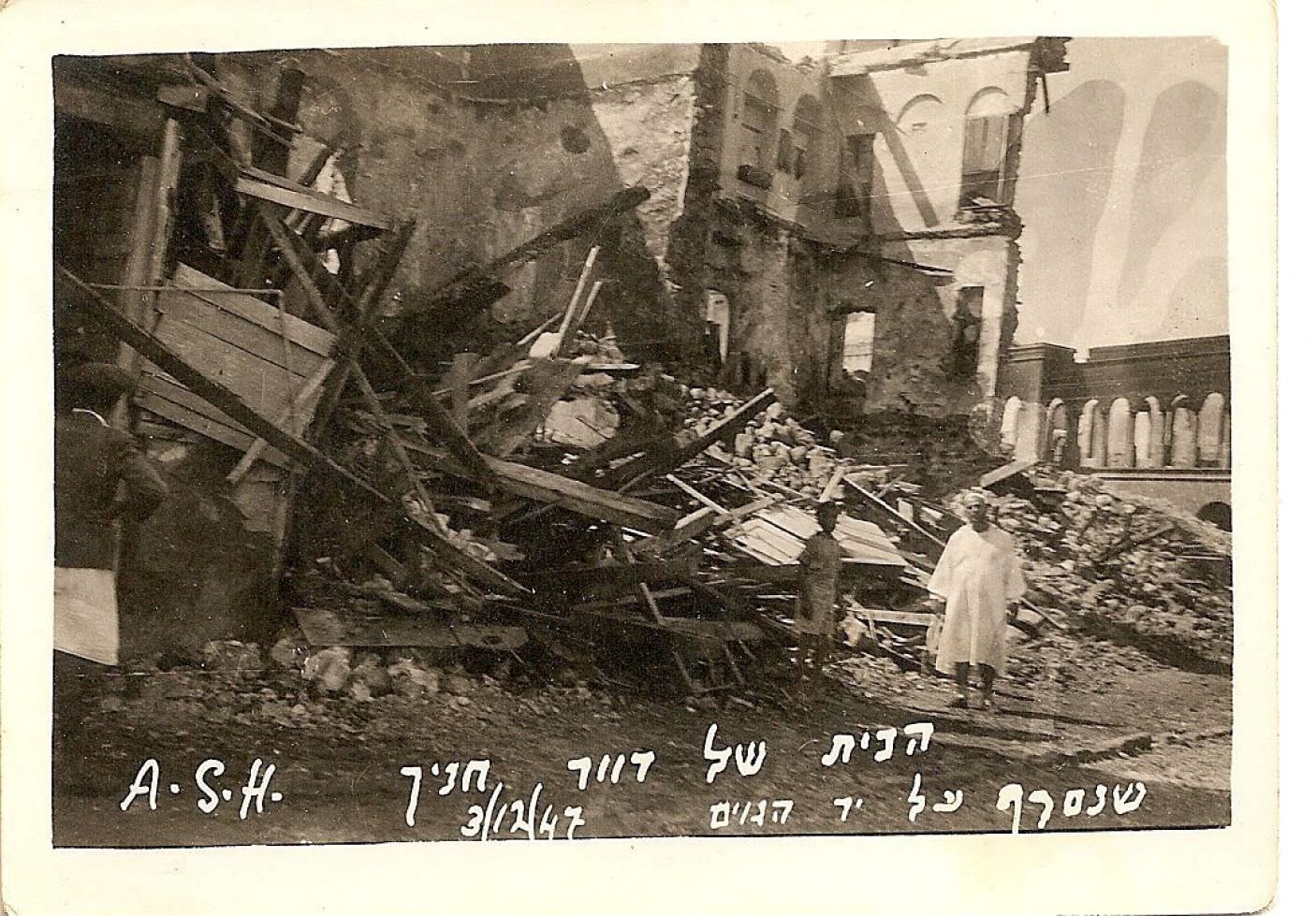
People stand in front of a house burnt during the Aden riots in 1947. Danny Goldschmidt, Aden Jewish Heritage Museum
Thirty days after the riots the Aden Jewish Association in Eretz Yisrael held a memorial for those murdered, in the community’s synagogue at 5 Lilienblum Street in Tel Aviv. There, the community issued a call for the Jewish Agency and the country’s institutions to do all in their power to bring Aden’s Jews to the holy land.
Five years ago, a small museum was set up in the synagogue to document the community’s history; it contains testimonies, documents, artifacts and photographs. One corner of the museum is dedicated to the pogrom. A memorial pamphlet lists the names of the 87 people killed in the rioting.
“The Aden community lost 87 people because of the declaration of the Jewish state. Their only sin was the founding of the State of Israel,” said Sasson. A few months after the state was declared, he made aliyah alone. His mother, who was heavily pregnant, and his sisters joined him afterward. His father remained in Aden until 1967, when the British withdrew from the territory.
There were those left behind in Aden, Sasson said. “Not everyone hurt during the disturbances was located in the end,” he said. “There are those who disappeared and were never found. To this day we don’t know where they are.”
Prof. Michael David, director of the Skin Department at Beilinson Hospital and the brother of Gavriel David, is angry at the state for not preserving the memory of those murdered in the disturbances.
“When they mark November 29 in schools, they don’t talk about this pogrom, which was directly connected,” he said. “It’s terrible to make this comparison, but fewer people were killed in the Kishinev pogroms than were killed in Aden. Perhaps if we’d had a Bialik, our memory would look different,” he said, referring to Haim Nahman Bialik’s famous poem, “In the City of Slaughter,” written after the Kishinev pogroms in 1903.
Originally published HERE

